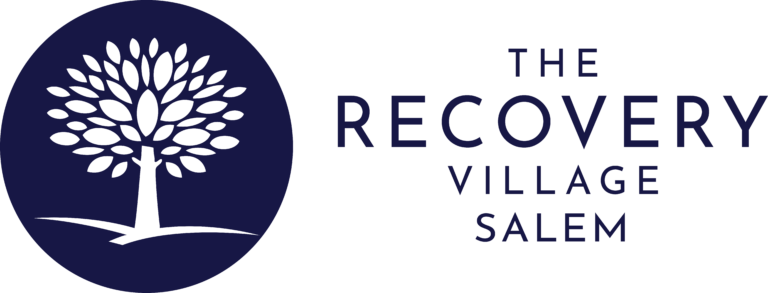Medication Assisted Treatment represents one of the most effective, scientifically-proven approaches to treating opioid and alcohol use disorders. This comprehensive treatment model combines FDA-approved medications with counseling and behavioral therapies to provide a holistic approach to addiction recovery. Understanding MAT’s benefits, applications, and implementation can be crucial for individuals and families navigating the complex landscape of addiction treatment options.
Understanding Medication Assisted Treatment
MAT is a evidence-based treatment approach that uses medications, in combination with counseling and behavioral therapies, to treat substance use disorders. The goal is to provide a comprehensive approach that addresses the biological, psychological, and social aspects of addiction. This treatment model has been shown to improve patient survival, increase retention in treatment, decrease illicit opioid use, and reduce the risk of infectious disease transmission.
The medications used in MAT are designed to normalize brain chemistry, block the euphoric effects of substances, relieve physiological cravings, and normalize body functions without the negative effects of the substance being treated. When combined with counseling and behavioral therapies, MAT provides patients with the foundation for sustained recovery.
FDA-Approved Medications for Opioid Use Disorder
Methadone
Methadone is a long-acting opioid agonist that has been used in treatment for over four decades. It works by binding to the same opioid receptors in the brain that are targeted by other opioids, but without producing the euphoric high. Methadone helps reduce cravings and withdrawal symptoms, allowing individuals to focus on other aspects of recovery.
Ready to Break Free From Addiction?
If you’re seeking help for yourself or a loved one, our expert team is here to guide you every step of the way. Don’t wait—start your journey to recovery today.
Methadone treatment requires daily visits to specialized clinics, particularly in the early stages of treatment. This structure provides built-in accountability and regular medical monitoring. As patients progress in their recovery, they may earn take-home privileges that allow for greater flexibility while maintaining treatment effectiveness.
Buprenorphine
Buprenorphine is a partial opioid agonist that produces a milder effect than full opioids while still reducing cravings and withdrawal symptoms. This medication has a “ceiling effect” that reduces the risk of overdose and abuse. Buprenorphine can be prescribed by qualified physicians in office-based settings, making it more accessible than methadone treatment.
The medication is available in several formulations, including sublingual tablets, films, and long-acting injections. This variety allows treatment providers to tailor medication choices to individual patient needs and preferences. Buprenorphine treatment often begins with a period of medical supervision to ensure safe and effective dosing.
Naltrexone
Naltrexone is an opioid antagonist that blocks the effects of opioids by binding to opioid receptors without activating them. This medication prevents the euphoric effects of opioids, reducing the incentive to use these substances. Naltrexone is available in both oral and long-acting injectable formulations.
The injectable form, administered monthly, helps ensure medication compliance and provides consistent protection against relapse. Naltrexone requires complete detoxification from opioids before treatment begins, as it can precipitate severe withdrawal symptoms if opioids are still present in the system.
FDA-Approved Medications for Alcohol Use Disorder
Disulfiram
Disulfiram creates an unpleasant reaction when alcohol is consumed, including nausea, vomiting, and other uncomfortable symptoms. This medication works as a deterrent by making drinking alcohol physically unpleasant. The effectiveness of disulfiram depends largely on medication compliance and is often most successful when combined with supportive counseling and family involvement.
Acamprosate
Acamprosate helps restore the normal balance of neurotransmitters in the brain that has been disrupted by chronic alcohol use. This medication reduces cravings and the physical discomfort associated with abstinence from alcohol. Acamprosate is most effective when combined with psychosocial support and is typically started after detoxification is complete.
Naltrexone for Alcohol Use Disorder
In addition to its use for opioid addiction, naltrexone is also effective for treating alcohol use disorder. It reduces the pleasurable effects of alcohol and can help decrease both the urge to drink and the amount consumed if drinking occurs. This dual application makes naltrexone a versatile tool in addiction treatment.
The Comprehensive MAT Approach
Medical Evaluation and Assessment
Effective MAT begins with comprehensive medical and psychological evaluation to determine the most appropriate medication and treatment approach. This assessment considers factors such as the severity of addiction, medical history, mental health status, and social support systems. The evaluation process ensures that treatment recommendations are tailored to individual needs.
Healthcare providers conduct thorough screenings to identify any contraindications to specific medications and to develop safety protocols for treatment initiation. This careful assessment process is crucial for ensuring both the safety and effectiveness of MAT interventions.
Counseling and Behavioral Therapies
While medications address the biological aspects of addiction, counseling and behavioral therapies are essential for addressing the psychological and social components. Cognitive-behavioral therapy helps patients identify triggers, develop coping strategies, and modify behaviors that contribute to substance use.
Group therapy provides peer support and helps patients learn from others’ experiences while developing social skills necessary for sustained recovery. Individual counseling addresses personal issues that may contribute to addiction and helps patients develop personalized recovery plans.
Ongoing Medical Monitoring
MAT requires regular medical monitoring to ensure medication effectiveness, identify potential side effects, and adjust treatment as needed. This ongoing supervision helps optimize treatment outcomes while maintaining patient safety. Regular monitoring also provides opportunities to address any emerging health concerns and to modify treatment plans as recovery progresses.
Healthcare providers track various indicators of treatment progress, including substance use patterns, mental health status, social functioning, and overall quality of life. This comprehensive monitoring approach helps ensure that treatment remains effective and responsive to changing needs.
Benefits of Medication Assisted Treatment
Improved Treatment Retention
Research consistently demonstrates that individuals receiving MAT remain in treatment longer than those receiving behavioral interventions alone. This improved retention is crucial because longer treatment duration is associated with better recovery outcomes. The medications help stabilize brain chemistry, making it easier for patients to engage in other aspects of treatment.
Reduced Overdose Risk
MAT significantly reduces the risk of fatal overdose by providing medically supervised alternatives to illicit drug use. The controlled nature of medication administration and the gradual stabilization of brain chemistry create a much safer environment for recovery. Studies show dramatic reductions in overdose deaths among individuals receiving MAT compared to those not in treatment.
Decreased Criminal Activity
The stabilization provided by MAT often leads to significant reductions in criminal activity associated with obtaining and using illicit substances. When individuals have access to legal, medically supervised treatment, the need to engage in illegal activities to support their addiction decreases substantially.
Improved Social Functioning
As individuals stabilize on MAT, they often experience improvements in employment, housing stability, and family relationships. The reduction in cravings and withdrawal symptoms allows people to focus on rebuilding their lives and developing healthy relationships and responsibilities.
Addressing Common Concerns and Misconceptions
Is MAT Simply Replacing One Addiction with Another?
This common misconception fails to understand the fundamental differences between therapeutic medication use and addiction. MAT medications are prescribed and monitored by healthcare professionals, used at therapeutic doses, and taken as part of a comprehensive treatment plan. Unlike addiction, MAT use improves rather than impairs functioning and quality of life.
The medications used in MAT do not produce euphoria when used as prescribed and help normalize brain function that has been disrupted by addiction. The goal is recovery and improved health outcomes, not continued substance abuse.
Duration of MAT Treatment
The length of MAT treatment varies significantly among individuals and should be determined based on individual needs rather than arbitrary timelines. Some people benefit from short-term treatment, while others require longer-term or even indefinite treatment to maintain recovery. Research supports individualized treatment duration based on clinical response and personal circumstances.
Successful MAT treatment focuses on achieving stability and improving quality of life rather than rushing to discontinue medications. For many individuals, long-term MAT provides the foundation for sustained recovery and productive lives.
Integration with Comprehensive Treatment Programs
Inpatient and Residential Treatment
MAT can be effectively integrated into inpatient rehab programs to provide comprehensive care during the critical early stages of recovery. This integration allows for close medical monitoring during medication initiation while providing intensive counseling and support services.
Residential treatment settings offer the advantage of 24-hour medical supervision and the ability to address complex medical and psychiatric conditions that often accompany severe addiction. The structured environment supports medication compliance while patients develop the skills necessary for independent recovery management.
Outpatient Treatment Services
Many individuals successfully receive MAT through outpatient programs that allow them to maintain work, family, and community responsibilities while receiving treatment. Outpatient MAT programs vary in intensity from daily clinic visits to monthly appointments, depending on individual needs and treatment progress.
The flexibility of outpatient MAT makes treatment accessible to a broader range of individuals who might not be able to participate in residential programs due to family, work, or financial obligations.
Special Populations and Considerations
Pregnancy and MAT
Pregnant women with opioid use disorders require specialized care that balances the needs of both mother and baby. MAT is considered the standard of care for pregnant women with opioid addiction, as it reduces the risks associated with continued illicit drug use while supporting healthy pregnancy outcomes.
Specialized protocols ensure the safety of both mother and baby throughout pregnancy and delivery. Medical teams coordinate closely to manage any potential complications and to plan for the care of newborns who may experience neonatal abstinence syndrome.
Adolescents and Young Adults
Young people with substance use disorders may benefit from age-appropriate MAT programs that consider developmental factors and family involvement. Treatment approaches for adolescents often involve more intensive family therapy and educational support to address the unique challenges facing young people in recovery.
Co-occurring Mental Health Conditions
Many individuals requiring MAT also have co-occurring mental health conditions that require integrated treatment approaches. Dual diagnosis treatment addresses both addiction and mental health conditions simultaneously, recognizing the complex interactions between these conditions.
Access and Implementation Challenges
Provider Training and Certification
One of the primary barriers to MAT access is the limited number of healthcare providers trained and certified to prescribe addiction treatment medications. Expanding provider capacity requires ongoing training programs and support for healthcare professionals willing to specialize in addiction medicine.
Insurance Coverage and Financial Barriers
While insurance coverage for MAT has improved significantly, barriers still exist for some individuals. Understanding insurance for rehab coverage and advocating for comprehensive benefits helps ensure that financial considerations don’t prevent access to effective treatment.
Geographic Accessibility
Rural and underserved areas often lack access to MAT providers, creating significant barriers for individuals seeking treatment. Telemedicine and mobile treatment programs are emerging as solutions to address geographic barriers to care.
The Future of Medication Assisted Treatment
New Medication Development
Ongoing research continues to develop new medications and formulations that may improve treatment outcomes and accessibility. Long-acting formulations and new mechanisms of action hold promise for expanding treatment options and improving patient convenience.
Integration with Technology
Digital health tools and smartphone applications are being developed to support MAT by providing medication reminders, tracking symptoms, and facilitating communication with healthcare providers. These technologies may help improve medication compliance and treatment engagement.
Policy and System Changes
Continued advocacy for policy changes that support MAT access and remove unnecessary barriers is essential for expanding the reach of these life-saving treatments. System-level changes in healthcare delivery and insurance coverage will help ensure that more individuals can access effective treatment.
Making the Decision to Pursue MAT
Deciding whether MAT is appropriate requires careful consideration of individual circumstances, treatment goals, and available resources. Working with qualified healthcare providers who understand addiction medicine is essential for making informed decisions about treatment options.
The decision to pursue MAT should be based on a comprehensive assessment of the individual’s medical, psychological, and social needs. Treatment providers can help evaluate the potential benefits and risks of different approaches and develop personalized treatment recommendations.
For individuals considering Salem rehab options, understanding the availability of MAT services and integration with other treatment modalities can help inform treatment choices. Comprehensive treatment programs that offer MAT alongside counseling, behavioral therapies, and support services provide the best foundation for long-term recovery success.
MAT represents a significant advancement in addiction treatment that has helped millions of people achieve recovery and rebuild their lives. By combining the best of medical science with comprehensive psychosocial support, MAT offers hope and healing for individuals and families affected by addiction. The continued expansion of MAT services and ongoing research into new treatment approaches promise even better outcomes for future generations of people seeking recovery from addiction.


